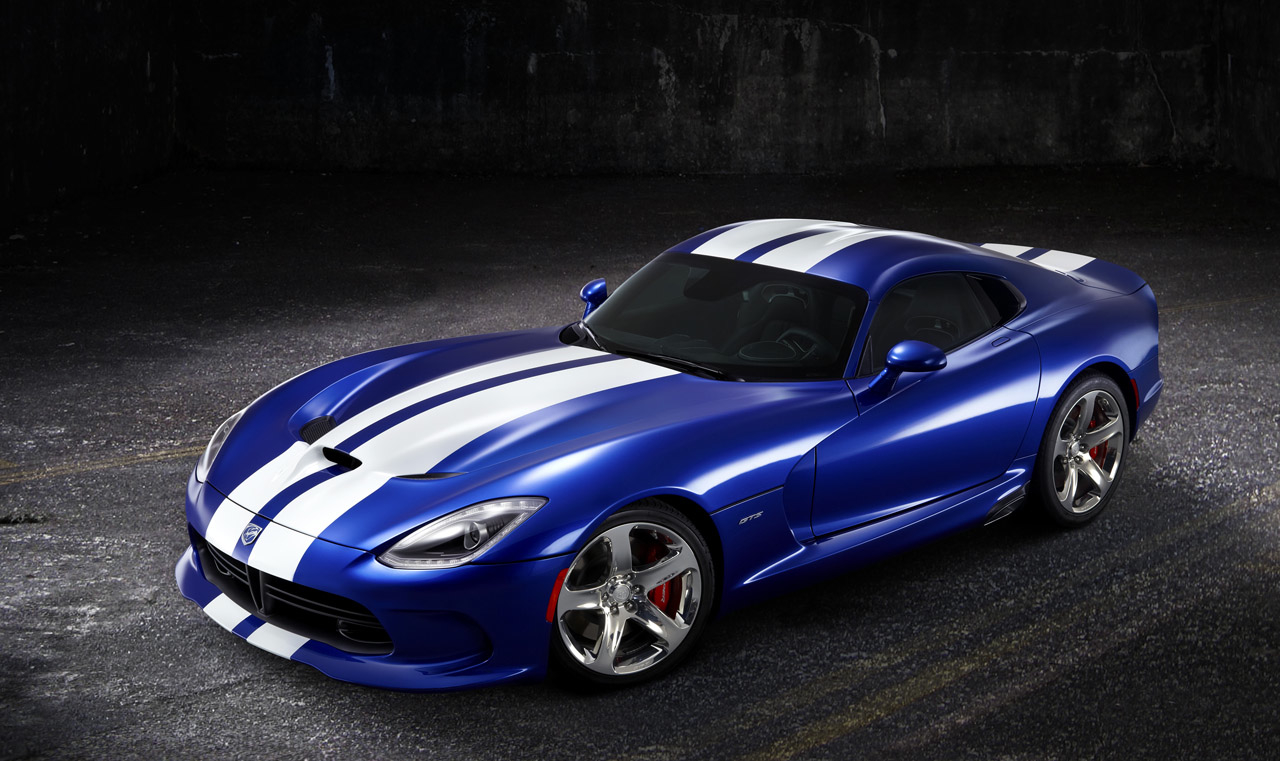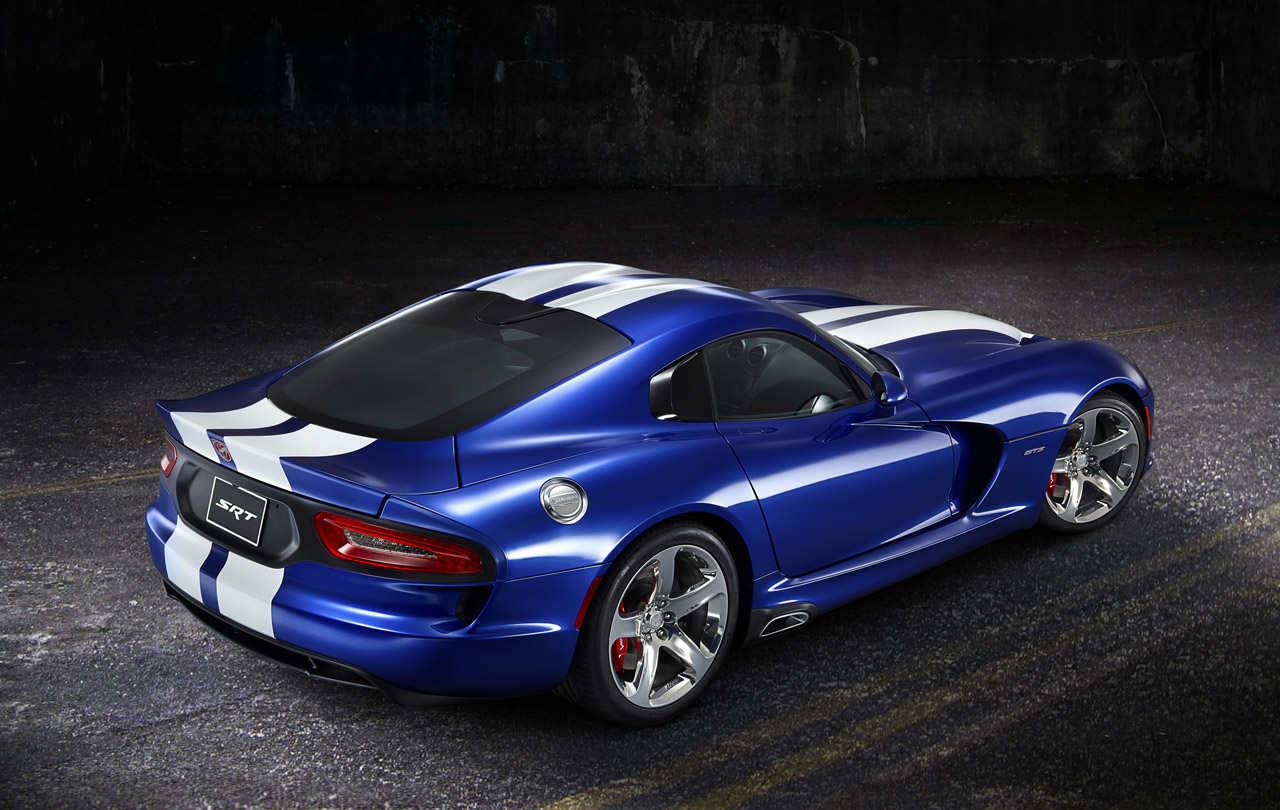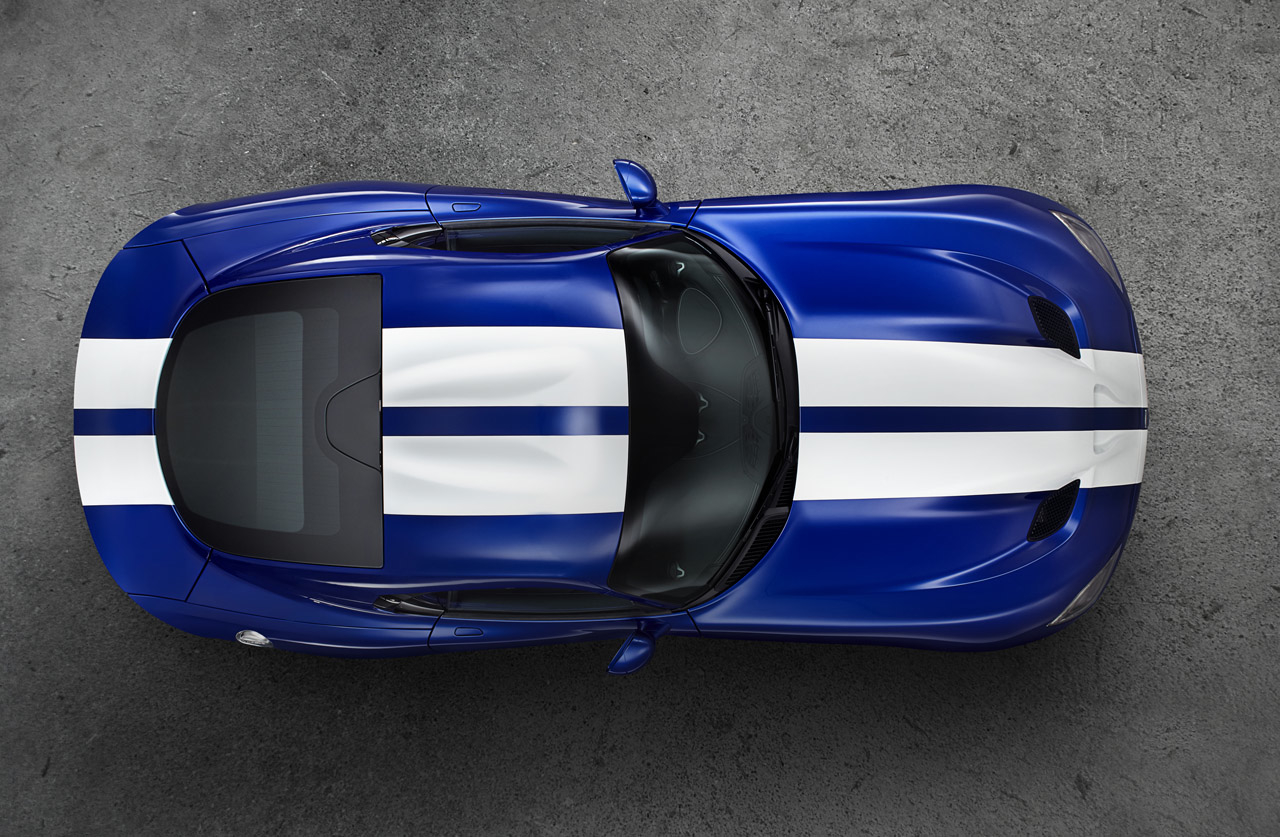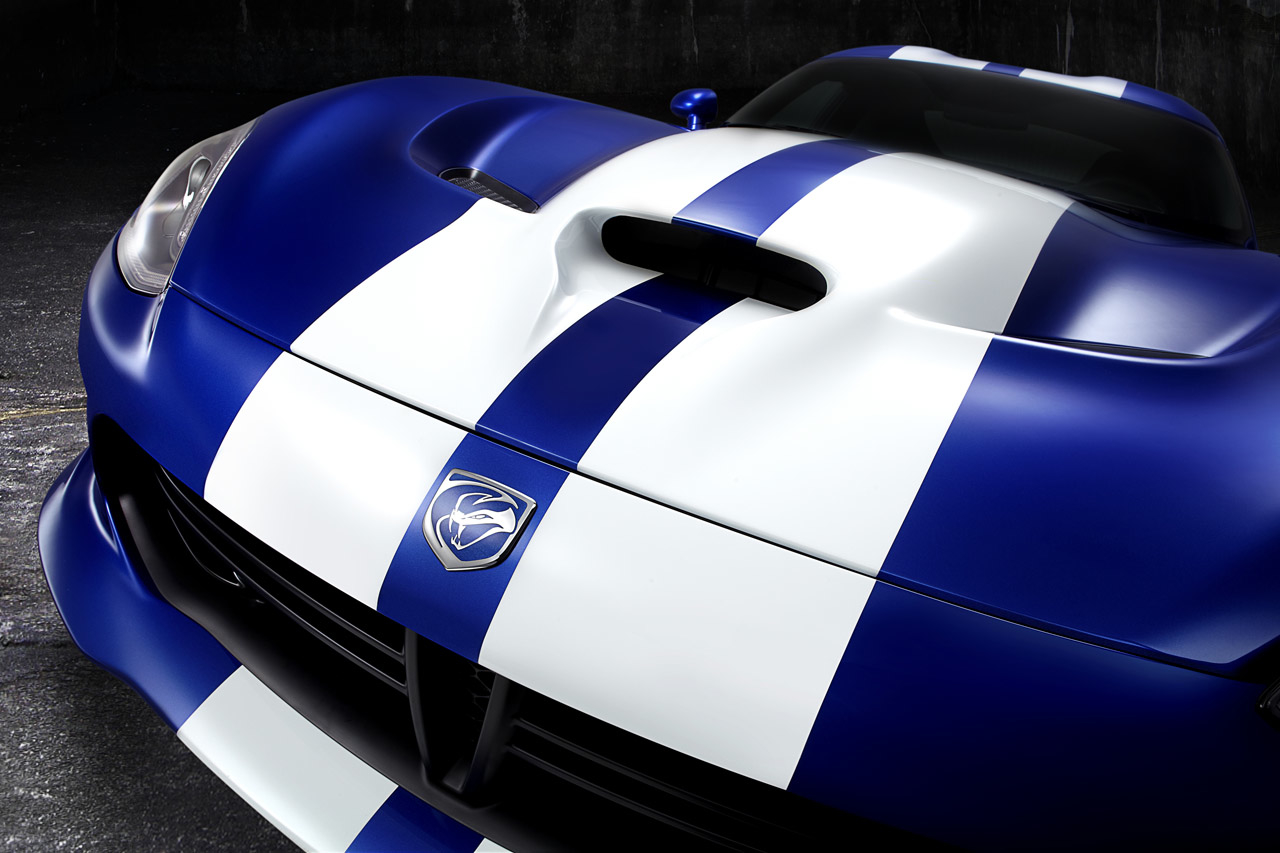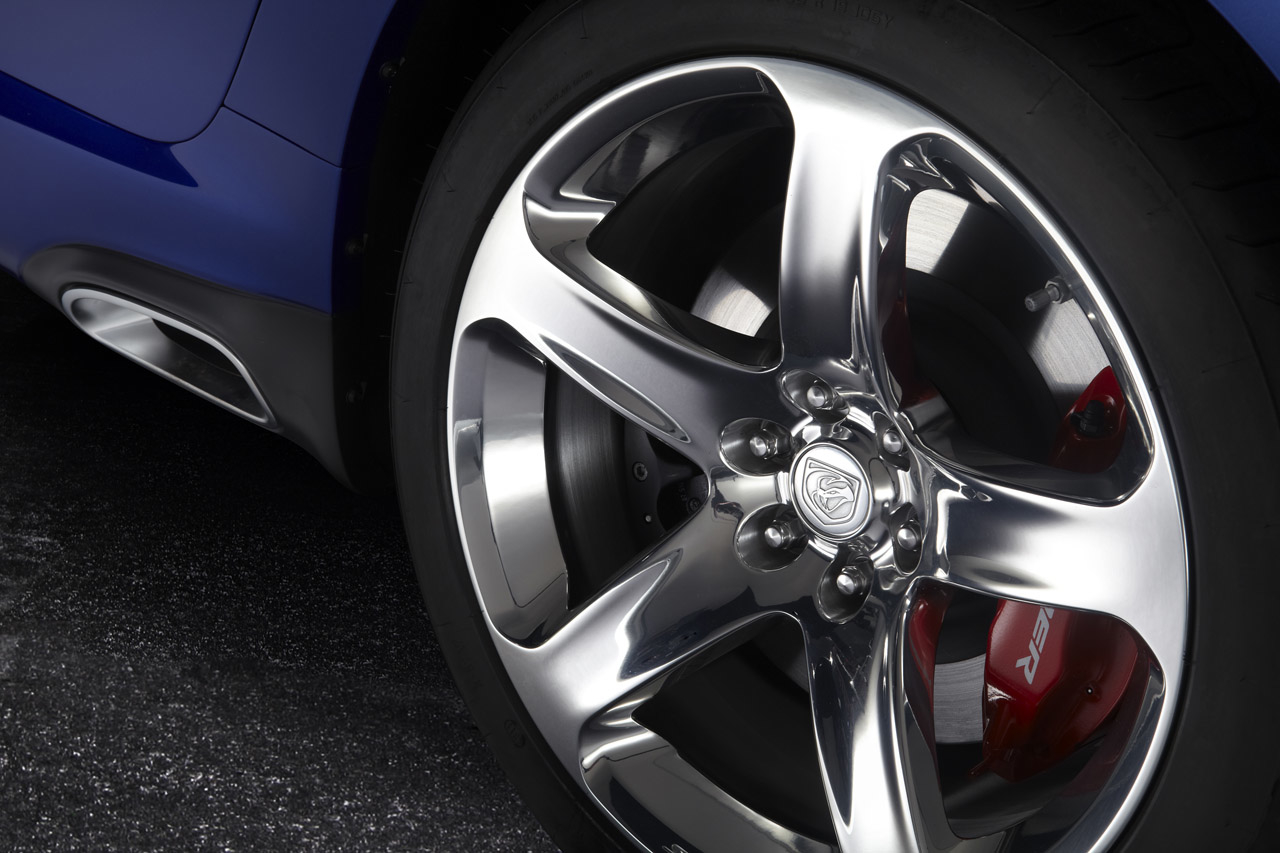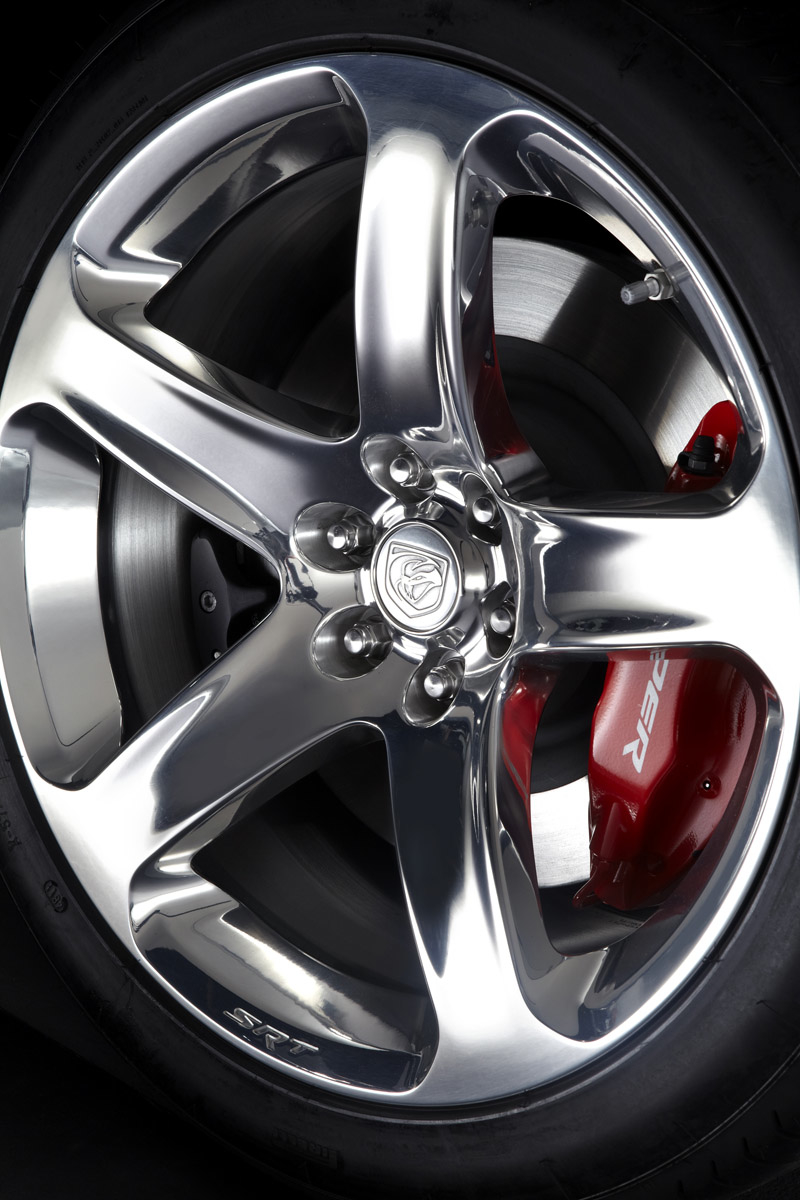With the public debut of the 2013 SRT at the New York auto show, we’ve scoured the Autoweek archives to bring you some classic Viper stories from our past. For exclusive Viper Week content including the latest news as it happens, check out Autoweek’s Viper Week.
By Kevin A. Wilson, originally published in Autoweek 03/04/1996.
Bang the numbers into a calculator and it would appear that the GTS could top 200 mph if geared to do so. But that wasn’t a priority, Helbig said.
Herb Helbig’s job on the Dodge Viper team is Manager of Vehicle Synthesis. That’s a real title. He makes sure that all the bits and pieces work together to produce a cohesive whole. That someone actually has such a job says volumes about the new GTS coupe; it’s much more than a Viper roadster with a roof on it.
The team’s marching orders were to make the coupe friendlier to use over a broader range of weather conditions than was the roadster. It’s supposed to be both faster and more refined, without subduing the raw, visceral character of the original. Helbig’s task required that he balance these sometimes conflicting goals. His personal perspective is itself a synthesis of diverse approaches to performance, which clarified his mission.
“I’m really more of a drag racing guy than a road racer,” Helbig said from the driver’s seat of a pilot-production model Viper GTS early one January morning at Chrysler’s proving grounds outside of Phoenix. A winter cold front had penetrated Arizona, and there was a crisp, desert coolness in the atmosphere. It was good horsepower-making air.
As Helbig spoke, he was tossing the blue-and-white monster around orange traffic cones that outlined what would be, if you were driving a Neon Sport, a loose, fast slalom course. In the Viper GTS, with its thoroughly revamped 450-hp, 8.0-liter V10, a car that should be capable of more than 180 mph, the course was a tight, confining venue.
Helbig had the car sideways virtually the whole way around the course, neatly balancing it with quick flicks at the steering wheel and a gentle toe-touch on the accelerator pedal to modulate the power-induced oversteer. It was an impressive display of car control; he punted only a single cone in a half dozen tire-squealing laps.
Where did a drag racer learn to do that? Helbig, a lean man of average height whose sandy-colored beard and wire-rimmed spectacles give him a professorial look, said he first “started turning left and right” during a stint as an engineer assigned to suspension and handling programs. But, he adds, he didn’t learn “to turn left and right the right way” until he’d served under Neil Hannemann, the Chrysler engineer and road racer.
Helbig the driver has clearly advanced a long way from his Long Island roots as a gas-it and go-straight racer. In its latest incarnation, the Viper is also moving on from rude, bad-boy roots. Our first impression is that the team met its goal: This car is more refined, but retains a clear Viper character.
That said, watching Helbig alternately sliding and catching the GTS with relative ease, those familiar with the roadster might wonder if this coupe were the same car underneath at all. The original Dodge snake, like the Cobra from which it drew inspiration, was known for its quick bite, a snap oversteer that gave little warning. You needed to treat it with a lot of respect near its limits.
So, as we clambered out from the passenger seat, ducking to clear the new roof while stepping over the wide side sill, and prepared to slide in behind the wheel in Helbig’s place, the question at hand was this: Was the demonstration we had just witnessed all about driving skills honed over years of living and breathing Viper, or was this car actually easier to handle at the limits than its predecessors?
A brief, positive experience last year with a ’96 roadster encouraged us. It featured several engineering advances developed for the GTS program and pulled forward into the ’96 drop-top, including a revised suspension with aluminum alloy wishbones, a lower rear roll center, increased caster, stiffer springs, relocated mounts for the shock absorbers, and new Michelin MXX3 tires tuned especially for the car. For the GTS, the shocks have been revalved and the antiroll bar rates changed. The goal was a little more built-in understeer, Helbig said, to balance against the increased power available at the rear wheels.
We were able to balance the car easily with the gas pedal, and found it much more forgiving and more readily recoverable than the earlier roadsters were. Any 450-hp car demands respect, but our brief drive suggests this one will forgive small lapses on the part of an otherwise attentive driver.
The wind and tire noise levels are lower than in the raucous roadster, but the engine’s coarse rasp-a consequence as much of the uneven firing order as of the V10 layout-is still there whenever the revs climb beyond an easy cruise. You can get big-bang dragster-like acceleration with 0-60 mph times somewhere in the four-second range if that’s what you’re after (and the new Luk clutch and pressure plate should stand up to it). But when you’re on a winding road, you’ll be more impressed that the V10 generates a broad, fluid torque curve (the 490 lb ft peak is at 3700 rpm) and the output is very easily modulated. Small movements of the gas pedal create small changes in output; this is just as it should be, but it’s rarely the case in high-horsepower engines.
This engine is virtually all-new. Viper team senior engineer Pat Palajac said the original Viper V10 was produced on a hurry-up program, developed from the Dodge truck motor to strike while the market was hot for the roadster concept car. Playing it safe in this quick conversion from the iron truck engine into the aluminum alloy Viper powerplant, engineers opted for robustness over maximum efficiency. “We knew we could do better,” he said.
And so they have. There’s a new block, 20 pounds lighter and yet stronger thanks to extensive ribbing in the valley. The new heads are 13 pounds lighter, each, than the original’s. The coolant jackets are shorter, and a revised sump carries less oil (this part, which also reduces windage in the crankcase, was introduced in the ’96 model). The revised cooling system keeps temperatures more even from cylinder to cylinder, and the reduced coolant volume alone saves nearly 11 pounds. The whole engine is 85 pounds lighter than that in last year’s Viper.
The GTS as a whole weighs 60 pounds less than the roadster, despite the additional glass, bodywork and trim. The lighter engine and heftier rear bodywork mean the original Viper’s 50-50 weight distribution has shifted slightly aftward, so that now 51 percent of the mass rests on the rear axle. This is so, even though the gas tank is a bit smaller than before, at 19 gallons as opposed to 22 in the roadster. This was necessary so that the cargo bay could accommodate the full-size wheel and tire-the spare is a space-saver, but if you need to use it there’s room to stow the full-size flat.
The cabin has been overhauled, too. The revised B-post left no room for the roadster’s passive shoulder harness mounts, so active center-mounted belts extend over the driver’s right and the passenger’s left shoulder, and latch between the seats and the sills. Taking advantage of the need to retool the dashboard to fit dual airbags, Dodge moved the speedometer and tachometer closer together, directly in front of the driver. The black panel that houses warning lights and reminders (formerly mounted dead center in front of the driver) moves to a less prominent site, down and to the right. Now it’s easier to tell in a single glance that the V10 is turning less than 2000 rpm at 65 mph. An underseat stowage area replaces the glove box.
A more significant ergonomic improvement is found in the adjustable pedals, which move fore and aft over four inches of travel. The quickest way to find the best position is this: Adjust the seat to make your arms comfortable, then reach over and grab the dial on the lower part of the dashboard, to the left of the steering column, and move the pedals toward you until you can get full clutch travel.
The movable pedals, we were told, would have been easier, cheaper and faster to design if operated by electric motor rather than by the purely mechanical system employed. But the team decided that electric gizmos are not in keeping with the vehicle’s character.
But electrickery does play a role here. The door windows are power operated, because Viper’s doors were designed for side curtains and there was no room inside the upper part of them for a manual winding mechanism without intruding further on already tight passenger space. And, although you’d never know it unless you were told, the little button that accompanies a one-finger handle mounted on the door’s blacked-out B-post operates the latch through an electric mechanism. A lot of effort went into making it feel like a purely mechanical connection, but an electrical assist was needed to generate enough leverage. The only other solution would be to stick a big traditional handle on the door itself, a departure from the concept that Chrysler was unwilling to make.
If the team was careful to distance its car from the Lexus SC 400s of the world, it is even more careful about avoiding comparisons with America’s other sports car, the Corvette. The GTS has no ABS, no traction control, no electronic-adjusting shock absorbers, no automatic transmission. The coupe may be more refined than the roadster, but it stops short of Corvette’s claim to being “sophisticated.”
The new GTS body measures 0.395 Cd in the wind tunnel. Bang a few numbers into the calculator and it appears that the GTS could top 200 mph, had it been geared to do so. But, Helbig said, that wasn’t a priority.
“We’ll let the GTS-R race car worry about 200 mph,” Helbig said. “We could have geared it that way, but even if I could say we had the fastest production car in America, what would that do for the customer? No one could use it. Also, when we were choosing gearing we were more concerned about EPA than mph, because we knew we’d be under the gun on the guzzler tax.”
As it is, the GTS gets tagged with a $2,600 guzzler tax, even with the 0.5:1 overdrive sixth gear in the Borg-Warner skip-shift transmission that is shared with Corvette. Combined with a long-legged 3.07:1 final drive, the gearing does serve to keep the noise level down at 70 mph. At that speed, the soft-spoken Helbig didn’t need to raise his voice to be heard.
But that was with the windows closed. The high doors mean the windows are small and your view out is limited. Until we got the seat-pedal-steering wheel arrangement just right, the cozy cabin induced claustrophobia. Even though air conditioning is standard, we predict that many a GTS driver will drive with the windows down except in inclement weather. Those door windows, combined with the roof and better wet-weather grip from the tires, will extend the Viper-driving season by months. The Viper team cautions that it’s still only a three-season car; driving in snow is not advised.
We don’t know yet about the production edition, but the pilot car seemed to have fewer rattles and a firmer structure than the roadster. It would be foolish to draw many more conclusions. The controlled environment we were allowed at the proving ground sheltered the GTS from exposure to such harsh realities as potholes, pavement joints, surrounding traffic or speeds much in excess of 80 mph.
The GTS starts rolling off its new assembly line in April, just in time to serve as the Indy 500 pace car. Owners of road-going coupes who so desire can get dealer-applied pace-car replica decals through the MoPar catalog.
Chrysler gave owners of earlier Viper roadsters the first crack at the new coupe model, and three-quarters of the first-year production run of 1700 cars has been “pre-ordered” by those customers. Dodge will build only coupes until December. Beginning in early 1997, production of the roadster with some of the GTS changes will resume.
The MSRP, including destination fee, is $66,700, plus the $2,600 guzzler tax. If that’s the price on the final sticker, the luxury tax will be $3,730, for a total of $73,030. The 1996 GTS comes only in blue-with-white stripes, the paint scheme inspired-as was the design-by Carroll Shelby’s 1965 world championship winning Cobra Daytona coupes.
Shelby never put the coupe into production for the mass market, so only a handful of drivers has ever been lucky enough to experience it. Thirty-one years later, Dodge offers this road-going analog, and is backing it up with GTS-R race entries at Daytona and Le Mans. The GTS itself is the product of an entire team of people working closely together, but this time we’re most impressed that the amalgam of inspirations and intentions and necessities all comes together so well. Credit the manager of vehicle synthesis, a job title that we’re absolutely certain never existed at the Shelby works.







